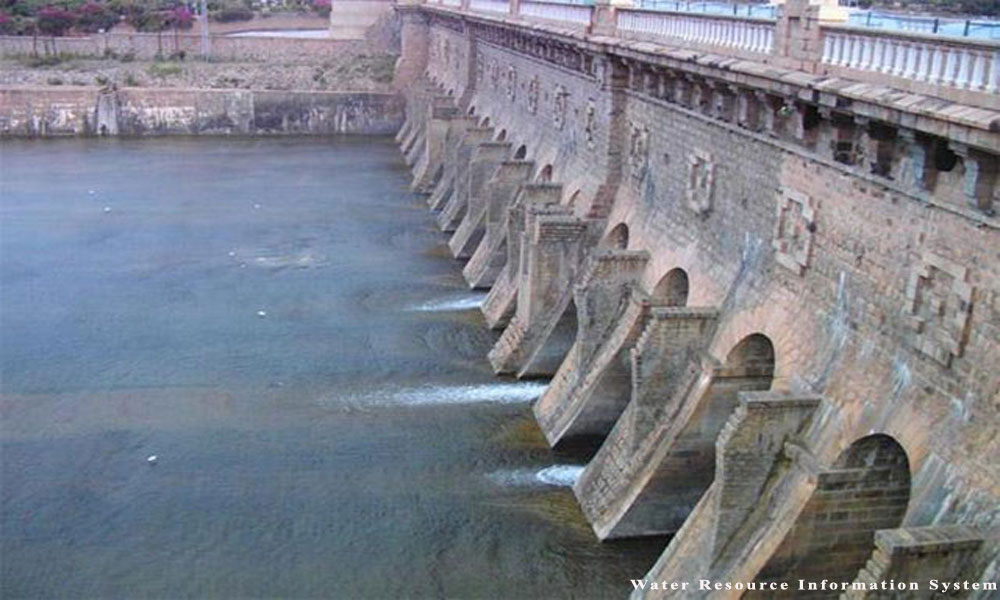The Cauvery dispute has been brought to a resolution, but the underlying causes remain unaddressed, says Barnana Sarkar
With a slight modification of the final award of the Cauvery Water Disputes Tribunal (CWDT), the Supreme Court has brought the curtain down on the longest-running quarrel over water in peninsular India. Its order marginally reduces Tamil Nadu’s share of the river’s waters to 404 thousand million cubic feet (tmcf) a year, raises Karnataka’s share to 285 tmcf and instructs it to annually release 177 tmcf to meet Tamil Nadu’s allocation.
In effect, the court has maintained a 60/40 distribution of the Cauvery’s waters between Tamil Nadu and Karnataka, which roughly corresponds to their shares of river’s catchment area. Tamil Nadu straddles 44,000 sq. km. of the Cauvery basin while Karnataka’s 32,000 sq. km. spread include its headwaters. Kerala and Puducherry also receive a small share each of the water.
Commentators have pointed out that even as the court has settled one problem, it might have created another. The decision has brought welcome closure to a problem that has soured relations between the neighbouring states and, on occasion, endangered the lives and property of their citizens residing in the other state. But its undoing of Article 262 of the Constitution, which vests in Parliament the exclusive right to resolve disputes over water-sharing between the states and bars courts from interfering in them, could have opened a can of worms.
The Cauvery water dispute dates to 1892, when the Madras Presidency (under British rule) objected to the then Kingdom of Mysore’s proposal to build irrigation system on the Cauvery. In 1924, the two states agreed that what’s now the KrishnarajaSagar (KRS) dam would be built at Kannambadi village. Under the agreement, Tamil Nadu and Pondicherry would receive 75% of the water while Karnataka would get 23% of it. The KRS dam was completed in 1931 and Tamil Nadu built the Mettur dam in 1934. By then, both states had become dependent on the Cauvery.
In 1991, the CWDT asked Karnataka not to expand its irrigated land in the basin beyond the existing 1.12 million acres (4,500 sq km) and to release around 205 tmcf of water to Tamil Nadu following the failure of the southwest monsoon that year. In 2002, the Cauvery River Authority instructed Karnataka to release about 9,000 cusecs per day to Tamil Nadu. In 2007, the CWDT’s ‘final’ distribution of the river water between the four states became the causes of several political agitations.
The perception that Karnataka requires less water than its neighbour has long agitated its people. Of the 740 TMC ft, which is estimated annual flow in the river, a minimum of 726 TMC ft is already being utilized. Karnataka, which often faces severe water shortages, has repeatedly objected to having to share scarce water with Tamil Nadu.
“Kolar, as a part of Karnataka, does not receive sufficient water for irrigation. As there is no system to store rain water in Kolar, we must draw water from Mandya and Bangalore. And even that water is used only for drinking purposes,” explains Nagaraj, a journalist working with Suddi TV and a Dalit right activist from Kolar. “When the demand increases in summer, there is a problem sharing the water. Moreover, there is also the problem of irregular rainfall which hampers irrigation,” he says.
In April 2017, Karnataka had faced a severe shortage of water when KrishnarajaSagar and Kabini faced a shortfall in storage of 4.4 tmcf. Karnataka’s growing tech hub, Bangalore which alone supports a population of nearly 12.34 million, faces frequent power cuts and water shortages. Pushpa Surendra, author of the Rural Diary column in The Hindu newspaper says, “I personally think the final verdict of the Tribunal did not really take the concerns of Karnataka seriously.”
Says Tshitij, a Bangalore-based activist of the People’s Campaign for Right to Water, “All people in the riparian states have the right to water. But the situation has been deeply politicized. Probably, had it been left to the farmers the issue would have been resolved much before.” He further explains that while most farmers are cultivating water-intensive crops, it is necessary to take measures to introduce the farmers to alternative ones that require less water. “This will only happen with time-tested practices of water-efficient agriculture.”
The Supreme Court’s decision to set up a Cauvery Management Board (CMB), with representatives from the concerned states, was the next logical step. Since the CWDT based its allocation on ‘probable’ river flows with a 50% margin of error and refused to prescribe a ‘distress’ formula for sharing lower rates of flow, the Supreme Court decided that a permanent mechanism for dispute resolution would the next best alternative. The board will monitor the flow of water from KRS and Kabini reservoirs and the other tributaries which flow below KRS up to Billigundulu, on their common border.
But Karnataka is unhappy with the creation of the CMB as it could lose control over the dams in its territory. B T Venkatesh, a lawyer with Reach Law firm in Bangalore, supports Supreme Court’s decision setting up the CMB. “Although it does open up several other issues, it is quite an advanced step by the Supreme Court. The issue with most southern rivers is that they are rain-fed, unlike the rivers in the north that are mostly snow-fed. These rivers face periodic fluctuations in flows and that creates major crises between the states when their water needs have to be reconciled.”
Though the Supreme Court has done well to put a rest to the agitation of farmers in both states and keep matters beyond the reach of political influence, yet it has stopped short of looking at longer-term solutions to water shortages in the Cauvery basin. It has looked entirely at the supply side and even pointed to the groundwater potential in the basin as a factor to be considered. But it hasn’t a word to say about the waste of water and the poor management of water demand in both Karnataka and Tamil Nadu.
But as Surendra points out, the CWDT looked at the problem in its entirety and its 5-volume report offers as comprehensive a take on the dispute as can be imagined. “You cannot say that water-conservation methods are not looked into. They have, but their conclusions may be biased. Now the question is whether farmers waste water. The answer is yes. I can tell you that more and more farmers have shifted to growing millets, for example. But why don’t farmers grow crops that require less water? The answer is if it’s remunerative for farmers to grow crops such as millets, they will do so. Otherwise they will grow crops like sugarcane and rice because government gives minimum support price for these crops.”
“Several agricultural experts deposed before the CWDT on the issue of environment and which crop is suitable for which state and why,” she continues. “Issues of water conservation with a view to getting ‘more crop per drop’ were also discussed. ICRISAT experts who deposed for Karnataka have done a wonderful job. Dr. MS Swaminathan deposed for Tamil Nadu. He argued that high yielding varieties of paddy are more suitable for Tamil Nadu, how the delta cannot go for alternative crops and that’s why Tamil Nadu needs more water.” But these issues find no reflection in the Supreme Court’s deliberations.
As the rice bowl of south India, Tamil Nadu’s Cauvery delta requires the southwest monsoon to feed the kuruvai crops and during the early stages of samba crop. The kharif crops of Karnataka comprising millets, rice, maize, moong (pulse), ground nut, sugarcane, soya bean and turmeric require the first rains in the month of July.
All these crops (with the exception of millets) are water-intensive and, over the past several decades when the Cauvery has ebbed and flowed, very little effort has been made to diversify away from them. Moreover, not only are they dependent on an increasingly erratic weather system but even the way water is used in their cultivation, almost entirely in flood irrigation, is wasteful and completely irrational.
Considering the duration of the dispute over the Cauvery’s waters, all parties have had ample time to look for long-term solutions. But they chose to focus on the immediate problem and to finesse their arguments rather than seek lasting answers. As a result, while we’ve once again successfully bought time, we have,in reality,stored up trouble for the future.

